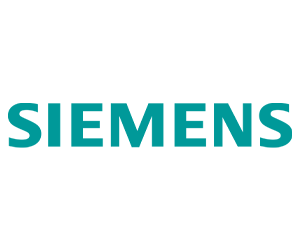Tumble Dryer Buying Guide
Tumble Dryer Buying Guide: Your Comprehensive Handbook
Choosing a tumble dryer can be overwhelming with the plethora of options available. Our comprehensive buying guide aims to simplify this process for you, covering essential aspects such as types, sizes, energy ratings, and key features to consider.
What is a Tumble Dryer?
A tumble dryer is a household appliance designed to remove moisture from clothes and textiles, leaving them warm, soft, and dry after washing.
Types of Tumble Dryers: Vented, Condenser and Heat Pump.
Understanding the different types of tumble dryers is crucial in making the right choice for your needs. These include vented, condenser, heat pump tumble dryers.

Vented Tumble Dryers
Vented tumble dryers are common and cost-effective, though less eco-friendly. They operate by drawing in air, heating it, and blowing it over clothes to dry them, expelling damp air through a vent to outside.

Condenser Tumble Dryers
Condenser tumble dryers offer flexibility as they don't require an external vent. They condense steam from drying clothes into water, collected in a removable container for easy disposal. No need for an external vent.

Heat Pump Tumble Dryers
Considered the most eco-friendly option, heat pump tumble dryers recycle warm air, making them energy-efficient. While they have higher upfront costs, they are ideal for long-term savings. They do usually take longer to dry clothes compared to other types.
Tumble Dryer Sizes and Capacities
Tumble dryers come in various sizes and capacities to accommodate different laundry needs. From compact models suitable for one or two people to larger capacities for families, choosing the right size is essential.

6kg - 7kg
These machines are suitable for smaller 1-2 person households. They are the most cost effective machines to buy.

8kg - 9kg
These machines provide enough space for small families for 3-4 people. These are the most common sizes for tumble dryers.

10kg +
These larger machines are great for big families or high amounts of drying. They can often fit bulkier items such as duvets and blankets too.
How to Measure for a New Tumble Dryer: Ensuring Seamless Integration

Before purchasing a tumble dryer, measuring the available space is crucial. Whether freestanding or integrated, accurate measurements ensure a proper fit and hassle-free installation.
Select the Suitable Model
Whether integrated or freestanding, ascertain the appropriate width, height, and depth to fit your space.
Integrated Dryers
Integrated Dryers can vary in height from 82cm - 85cm and a width of 59.6cm and a depth of between 46cm - 50cm. It is important to check your space to ensure a proper fit.
Freestanding Tumble Dryers
With Freestanding Tumble Dryers you can expect a general height of 84-85cm, width of 60cm, and depth of 59-60cm. This can vary as extra large capacity dryers can be be bigger to accomodate the larger drum size. Always read the product description for measurements if you're unsure.
Choosing The Right Type
Be careful about the type of tumble dryer you choose for your space. Do you have a vent for a vented dryer? Would a condenser or heat pump dryer work better? If you have a limited, confined space such as under the stairs, maybe a heat pump would be better as it gives of less heat and condensation while running.
Tumble Dryer Energy Ratings: Prioritizing Efficiency
Opt for energy-efficient models to minimize operational costs and environmental impact, particularly favoring larger units for optimal efficiency. Tumble Dryers work off the old energy efficency scale from A+++ - D.

Features to Consider: Elevating Utility
Smart Technology
Enables remote operation and energy monitoring via Wi-Fi connectivity.
Drum Lights
Extra lights inside the drum to help you see in when loading and unloading

Delay Start
Allows you to delay the starting time of cycles to start at optimal times
Quick Dry
A quick dry setting is perfect if you need a couple of items dry in a short space of time and don't have time to wait on a full load
Anti-crease
An anti-crease feature means that the drum will occasionally rotate to reduce the risk of creases until you can open the door to retrieve your garments.
Sensor Drying
A sensor in the drum is used to detect the moisture in the items and finish the cycle as soon as the clothes are dry irrelevant of what cycle is used
Picking Your Color: Melding Form with Function
While functionality is essential, considering the aesthetic appeal of your tumble dryer is also important. Whether you prefer classic white, sleek black, or trendy silver, choosing the right colour can complement your decor and style.

Black
Contemporary and low-maintenance, adding a sleek touch to any decor.

White
Timeless and space-enhancing, imparting a sense of openness and cleanliness.

Stainless Steel
Durable and modern, exuding sophistication and resilience.
Tumble Dryer Brands: Trusted Partners
Explore our range of renowned tumble dryer brands, ensuring compatibility with existing kitchen appliances:
Tumble Dryer FAQs: Addressing Common Queries
Navigate common concerns with insightful answers:
Vented dryers expel moist air outside through a vent and are generally more affordable but require external ventilation.
Condenser dryers condense the moisture and collect it in a reservoir, making them more flexible in terms of placement.
Heat pump dryers are energy-efficient, using a heat pump to recycle hot air, but they tend to be more expensive.












